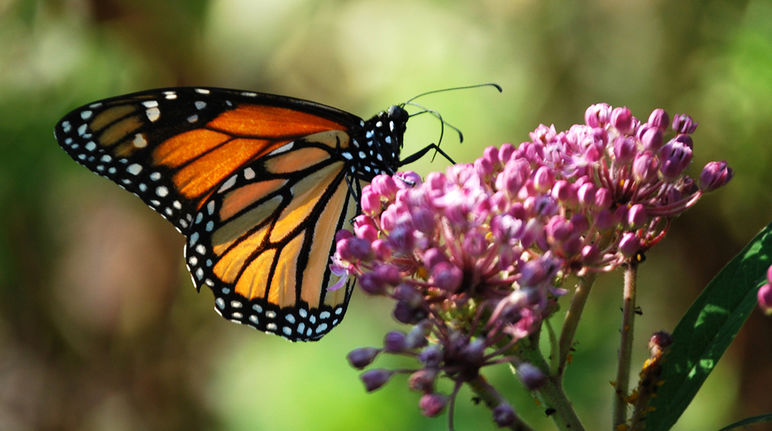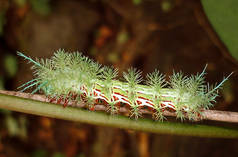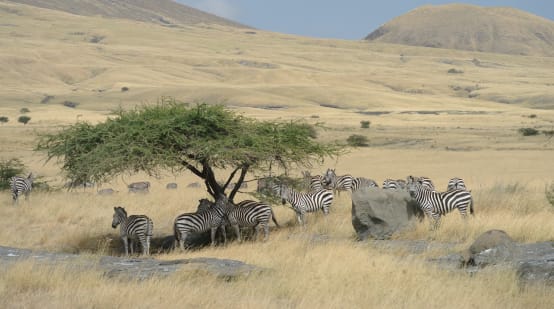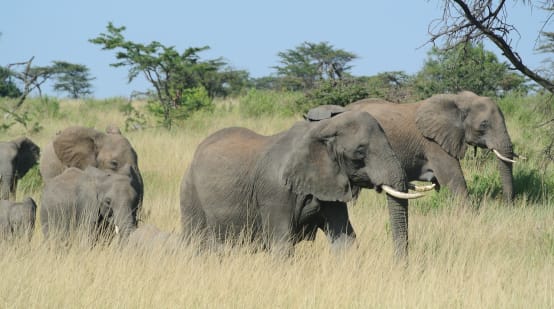Monsanto vs. monarchs – millions of butterflies disappearing
 Milkweed is crucial to the monarch's survival. (image: Rachel James – CC BY-NC-SA 2.0) (© Rachel James - ( CC BY-NC-SA 2.0 ))
Milkweed is crucial to the monarch's survival. (image: Rachel James – CC BY-NC-SA 2.0) (© Rachel James - ( CC BY-NC-SA 2.0 ))
Every year, millions of monarch butterflies migrate thousands of miles to their winter homes in Mexico. Recently, their numbers have plunged by 90 percent: herbicides tailored to Monsanto’s GE crops are driving the iconic butterfly to extinction. Please join us in calling for the monarch’s protection under the Endangered Species Act.
Call to actionTo: U.S. Fish and Wildlife Service (FWS), Washington, DC
“Tell the U.S. Fish & Wildlife Service to protect the threatened monarch butterfly.”
Monarch butterflies are one of the most beautiful and iconic insects in the world, and they are in serious trouble. The monarch butterfly population in North America has been shrinking at an alarming rate. Why? A major culprit is the use of herbicides like Monsanto's Roundup on genetically engineered (GE) crops, which is destroying a significant portion of their breeding habitat.
That's why the US NGOs Center for Food Safety and Center for Biological Diversity have just co-filed a groundbreaking legal petition – joined by Xerces Society for Invertebrate Conservation and renowned monarch scientist Prof. Lincoln Brower – to list the monarch butterfly as a threatened species under the Endangered Species Act (ESA). If listed, the U.S. government would be required to take urgent and significant action to protect monarchs from further declines.
Rainforest Rescue supports this initiative. Please add your voice to the petition to the U.S. Fish and Wildlife Service (FWS) in support of protecting monarchs under the ESA.
BackgroundWe all know that Monsanto’s genetically engineered crops and the pesticides they promote can wreak havoc on our farms, food, and environment. But what many people may not know is that they are also playing a big role in the rapid disappearance of monarchs.
Herbicides like Roundup don’t kill monarchs directly, but rather kill their primary food source and habitat. Milkweeds are critical to the monarch’s survival because they are the only plants monarch caterpillars will eat. But thanks to the rampant use of Roundup on Monsanto’s genetically engineered crops, milkweed plants in the heart of the monarch’s range have been decimated. Fewer milkweeds mean fewer monarchs.
So we are faced with a historic choice: Do we want Monsanto or monarchs? It is becoming increasingly clear that we cannot have both. To protect monarchs we must protect and reclaim their critical habitat, and reject Monsanto’s Roundup Ready GE crops, and the unsustainable, pesticide-intensive, industrial agriculture system promoted by them.
Though there are some good voluntary programs to restore milkweeds and protect monarchs, there are no mandatory regulatory mechanisms that adequately protect the monarch butterfly. Listing monarchs under the ESA will ensure that these iconic butterflies get the protection they need.
Join us in urging the FWS to protect monarch butterflies!
About the monarch
The monarch population has declined from a recorded high of approximately 1 billion butterflies in the mid-1990s to only 35 million butterflies last winter, the lowest number ever recorded. The overall population shows a steep and statistically significant decline of 90 percent over 20 years.
During the same period it is estimated that these once-common iconic orange and black butterflies may have lost more than 165 million acres of habitat — an area about the size of Texas — including nearly a third of their summer breeding grounds.
“We’re at risk of losing a symbolic backyard beauty that has been part of the childhood of every generation of Americans,” said Tierra Curry, a senior scientist at the Center for Biological Diversity. “The 90 percent drop in the monarch’s population is a loss so staggering that in human-population terms it would be like losing every living person in the United States except those in Florida and Ohio.”
Monarch butterflies are known for their spectacular multigenerational migration each year from Mexico to Canada and back. Found throughout the United States during summer months, in winter most monarchs from east of the Rockies converge in the mountains of central Mexico, where they form tight clusters on just a few acres of trees. Most monarchs west of the Rockies migrate to trees along the California coast to overwinter.
More information:
Joint press release (CFS with Xerces, CBD, etc): http://www.centerforfoodsafety.org/press-releases/3418/after-90-percent-decline-federal-protection-sought-for-monarch-butterfly
Legal petition: http://www.centerforfoodsafety.org/files/monarch-esa-petition-final_61585.pdf
FAQ about the petition: http://www.centerforfoodsafety.org/files/monarch-esa-petition-q-and-a_70946.pdf
Background info on pesticides and monarchs more generally: http://www.centerforfoodsafety.org/issues/304/pollinators-and-pesticides/about-monarchs-and-pesticides
Fact sheet: http://www.centerforfoodsafety.org/files/monarch_fact-sheet3_71122.pdf
Infographic: http://www.centerforfoodsafety.org/files/monarchinfographic_final-01_72966.jpg
Articles in the media:
The New York Times, Robbins, J. (2013, November 22). The Year the Monarch Didn’t Appear
National Geographic, Smith, L. (2014, August 19). Monarch Butterfly's Reign Threatened by Milkweed Decline
To: U.S. Fish and Wildlife Service (FWS), Washington, DC
Ladies and Gentlemen,
The monarch butterfly population in North America has been shrinking at an alarming rate, largely because a significant portion of their breeding habitat is being destroyed by herbicides used on genetically engineered (GE) crops. Milkweeds are critical to the monarch’s survival because they are the only plants monarch larvae will eat, but they are being decimated by the rampant use of Roundup (glyphosate) used in conjunction with Monsanto’s Roundup Ready™ GE crops.
Monarchs need urgent, comprehensive protection – the kind of protection only a listing under the Endangered Species Act (ESA) can provide. I urge you to grant Center for Food Safety’s joint petition to list the monarch butterfly as threatened under the ESA.
Sincerely,













 Recent successes
Recent successes